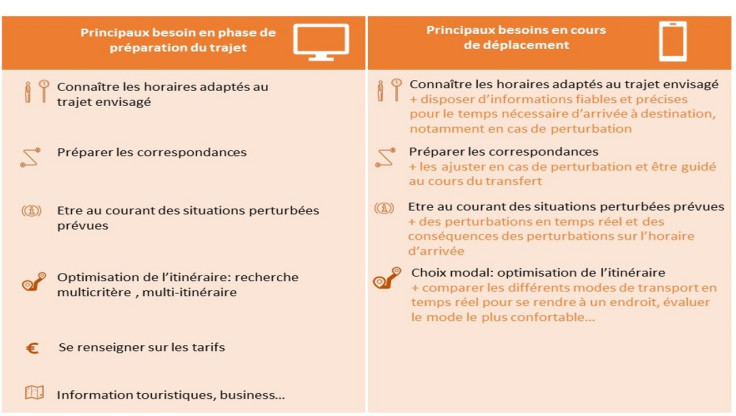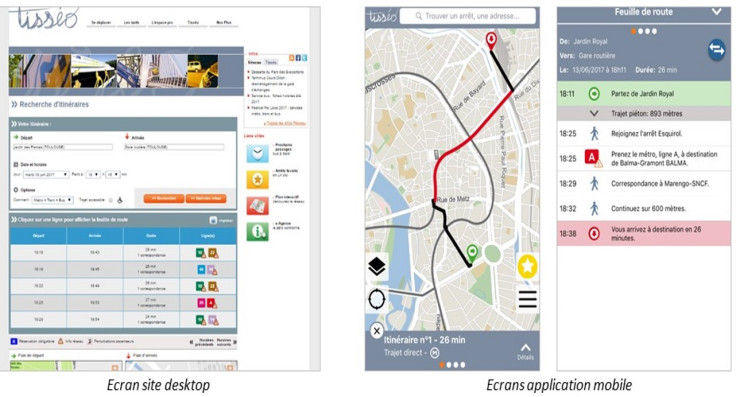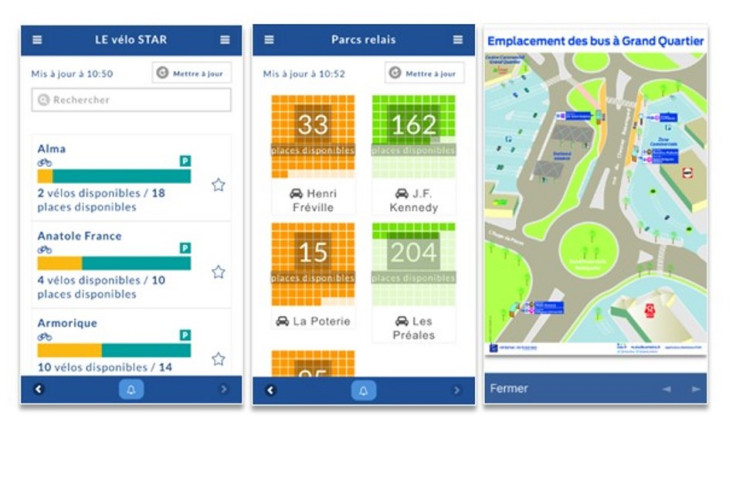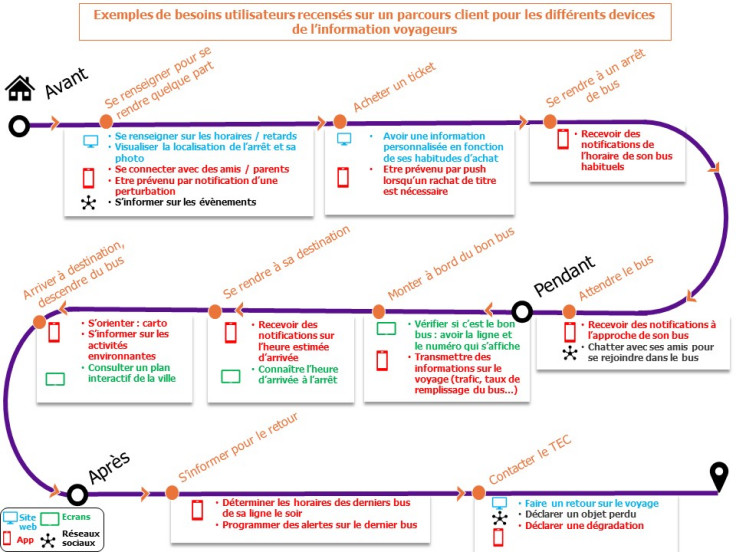The advent of web browsing via smartphone
In October 2016, there were 3.8 billion [i] web users around the world, more than half of whom surf with the tip of the index via their smartphone or tablet. To cope with this diversification of uses, many companies, in particular in the e-commerce sector, have chosen to extend their networks as much as possible on the web by developing both a website for computer (desktop), website for mobile (version of website adapted to smarpthone format) or mobile application.
But adopting an optimal and coherent multi-device digital strategy [ii] is proving extremely demanding. The fact of adapting its service to the various supports available (computer, mobile phone and tablet) generates significant development work and requires a global reflection to guarantee the simplicity and consistency of the customer journey, whether the latter uses the website, the mobile application or even both for example.
For example, Private Showroom is a particularly good student in this area and offers a very close or even similar customer experience between its site and its application:
 Showroom privé
Showroom privé
The effort of consistency between site, mobile site and mobile application seems to be essential in e-commerce today, but it represents an extremely heavy investment. Is this investment justified for a transport operator? Are responsive sites or single-device strategies credible and satisfactory alternatives in terms of digital strategy? And if we had to bet on a single device, which one would best meet the needs of transport users?
Is “Mobile first” the new black?
“ Mobile first ” designates a digital strategy favoring the development of mobile media. This concept stems from the theory according to which navigation via smartphone tends to gradually replace navigation on a computer. This theory has been confirmed so far with a sharp decline in Internet browsing on computers parallel to a continuous growth in the number of downloads of mobile applications (+15% in 2016 on a global scale [iii]) and to growth in m-commerce turnover (mobile commerce): €2.7 billion in 2013 against €7 billion in 2015 [iv] .
As a sign that the phenomenon should continue, Google indicated in 2017 that the Desktop versions of sites (that is to say, reserved for computers) would be insufficient in the future to exist on the web. The algorithm used for the referencing of sites by Google must be modified by 2018: any web content that is not suitable for mobile browsing will be less well referenced.
From this perspective, mobile solutions therefore benefit from primacy, particularly with regard to the passenger information systems of transport operators. Indeed, mobile solutions allow users to better plan their journey by knowing as much information as possible not only upstream but above all during their journey. The availability of this information on mobile is therefore particularly important.


Summary of key passenger information needs before and during displaceme t
Illustration of “Mobile first”, the public transport network of Toulouse and its region which has chosen to develop a mobile solution, in this case an application, provided with a graphic charter and ergonomics of research for more recent itinerary than on the website.

Tisséo (Toulouse public transport network and its region)
What solutions meet the need for passenger information on mobile?
To meet this need for information from users while on the move, several solutions can be considered in terms of web solutions on mobile:
- The “responsive” site: this is a site designed with a “responsive” design, which means that it has been programmed so that the layout can automatically adapt to the dimensions of the screens of the various possible media (computer , smartphone or tablet). It is therefore a single and unique website that can be displayed on a computer, on a smartphone or on a tablet.
- The mobile site: this is a website whose design and content in particular are adapted to optimize navigation on mobile.
- The mobile application: it is developed specifically for use on a mobile terminal and it must be downloaded by the user. It requires more design and development than that of a “responsive” site or a mobile site.
Each of its colutions has a certain number of advantages and disadvantages and different performances according to the different criteria studied:

It will be understood, there is no ideal solution but rather different possibilities of combining between responsive site + mobile application or desktop site + mobile site for example, the choice having to be made according to budget constraints and digital strategy most relevant.
Do or let it happen?
Regarding transport operators or transport organizing authorities in charge of passenger information, the latter face competition from sites and / or mobile applications offering to calculate routes in real time thanks to the use of Open Data (such as as Google Maps, City Mapper…). These services are particularly efficient and offer a service with an extended perimeter to several transport networks (for example, the site and the Google Maps application propose to calculate a journey made by public transport or aboard an Uber) (To learn more the question of the use of transport data and of players able to develop innovative mobility services, read our article ” How to use the potential of data to develop innovative mobility services? “)
Transport players can, for example, let these independent developers do it. On the other hand, if they want users to turn instead to their digital passenger information tools, they have every interest in adopting a positioning that allows them to offer an integrated service that other applications cannot offer.
The development of qualitative digital tools by transport operators therefore represents a very important issue. It is a real lever for attracting and retaining network users as well as a powerful tool for controlling and improving the relationship with users.
Thus, although the development of a mobile application is expensive and quite “demanding” and although one can imagine more “simple” solutions responding to the challenge of the presence on mobile, it seems relevant for the operators of transport (when the latter have the means) to deploy a multi-device passenger information strategy in which the potential of each device is optimized.
Some examples of good practice in terms of services offered on mobile passenger information applications
The RATP (Paris) and STAR (Rennes) passenger information applications offer very comprehensive information and services, but also and above all a particularly advanced customer experience suitable for use on smartphones:

The Rennes network application offers a personalized alert configuration by line but also for the use of bike-sharing and park-and-ride services. It also allows you to download all of the network maps and stops as well as the timetables for optimal access to information in offline mode.

The RATP application also makes it possible to configure many favorites (stop, address, line alerts, etc.) and offers the possibility of synchronizing the application with its diary or of benefiting from commercial information adapted to its geolocation.
The mobile application is therefore a central tool in the relationship with the user for transport operators. However, the desktop site is not dead and the emergence of “Messaging” solutions is starting to change the situation:

Although the mobile application appears at this stage to be the preferred tool for passenger information, it does not seem wise to focus solely on the development of the latter. Indeed, offering a high-performance website remains essential (it must imperatively be “responsive”).
Thus, the provision of a mobile application does not by itself guarantee the loyalty of customers or users. One in 4 applications installed on a phone is never used, 59% of applications are used only once [v] and one in 4 applications is even uninstalled after its first use [vi] .
In addition, the proportion of website visits from a computer remains high, in particular during the week (1 in 3 visits during the week [vii] ). The trends observed in digital matters among transport operators do not illustrate the fact that “desktop” sites are definitely to be shelved. The RATP or London transport network sites, for example, offer a very complete and interesting range of services and information by, most certainly to meet the needs of users who do not have access to a smartphone or do not have enough digital appetite or skill to use it while on the go.
Finally, a new solution has appeared in the digital landscape. The emergence of “Messaging” solutions make it possible to obtain information or even make a purchase directly via an Internet conversation held between a customer / user with agents or artificial intelligence. An intelligent Chatbot has thus been set up for the London transport network by Transport for London. The latter allows in particular:
- To know the arrival time of your bus by sharing its geolocation or transmitting a stop code;
- To learn about potential traffic alerts;
- To ask for network maps;
- To be put in touch with an agent for further requests.
[i] Sociomantic study April 2017
[ii] Mobile App Marketing Insights: How Consumers Really Find and Use Your Apps, Google, 2015
[iii] Médiamétire data April 2017
[iv] App Annie 2016 study
[v] Sociomantic study April 2017
[vi] We are social studies, 2017
[vii] Multi-device digital strategy: digital strategy consisting of offering services via the internet on different devices such as websites for computers (desktop), mobile websites or even applications for smartphones or tablets
Melanie Darrasse
Consultant Transport Mobility Tourism
Share to TwitterShare to FacebookShare to Copy LinkShare to EmailShare to More
Consultante Pôle Transport Mobilité Tourisme





